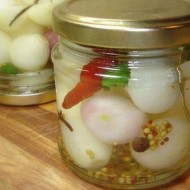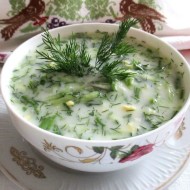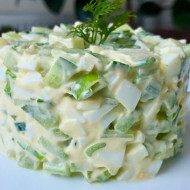Vitamin greens in the beds: planting and growing Suvorov onions
Content
Description and characteristics of the Suvorov bow
On the domestic territory, the plant is little known, since its habitat is in the mountainous regions of Asia and Altai. In horticultural circles, the variety received a different name - Anzur, sometimes the name giant or stalked onion is also found. According to its external characteristics, it is often compared to young tulips or garlic at the flowering stage.
At the peak of growth, the arrows of the plant can reach 1-1.3 m in height, the spread of wide leaves is 35 cm.The onion forms globular inflorescences of a purple hue, reaching 10 cm in diameter. The culture forms fruits with a size of 14 cm, having a rounded shape. Inexperienced gardeners often confuse Rokambol with Suvorov onions. The main difference lies in the structure of the bulb. In the first case, it is divided into 5-6 lobules, and in the second - into 2.
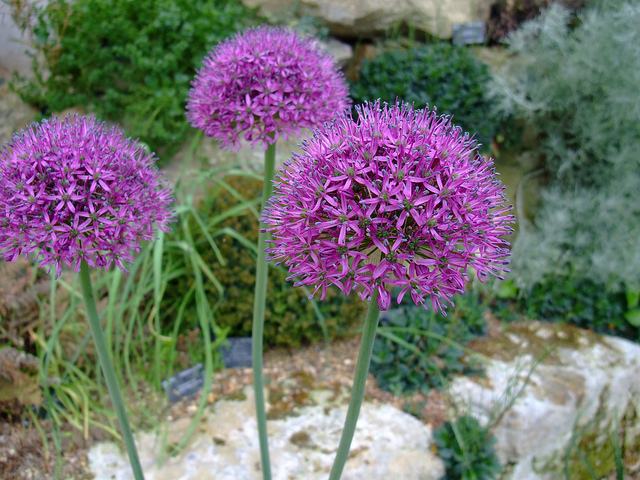
Nutritional value and useful properties
The rich vitamin composition increases the value of this variety many times over in comparison with the classic varieties of onions. The leading position is occupied by vitamins C and D, which affect the blood, as well as the structure of bones. The green part of the plant is rich in vitamins B, E and mineral salts.
The main beneficial properties of onions:
- anesthetic effect;
- improving brain activity and enhancing memory;
- increasing the protective functions of the body;
- activation of exchange processes;
- assistance in the fight against respiratory diseases;
- help in the treatment of diabetes mellitus.
Harm and contraindications for use
A product unique to our body can cause unpredictable consequences in people prone to allergic reactions. The bulbs also contain substances that can cause serious poisoning of the body. Therefore, it is prohibited to use it in its raw form.
Video "Healing properties of Anzur onion"
This video tells about the properties of the Suvorov bow.
Advantages and disadvantages
The Suvorov bow is not yet very common on the territory of our country. However, gardeners who have tried the culture are sure that soon it will be grown in every garden due to its many advantages.
- rich taste: outwardly, the shape of the bulb strongly resembles garlic, which can be said about the taste characteristics. The product is ideal for preparing a seasoning that adds spice to any dish;
- rich in vitamin composition: the product is saturated with vitamins necessary for bones and blood. By consuming a sufficient amount of onions, you can support the body during a period of seasonal lack of useful elements;
- early ripening: in the beds it appears faster than the rest of the greenery;
- resistance to negative factors: severe winter and various diseases do not affect the quality of the onion.
- young greens quickly become unusable due to rapid growth and coarseness;
- onions are edible only after heat treatment;
- moisture intolerance;
- not recommended for allergy sufferers, as it can cause an unpredictable reaction.
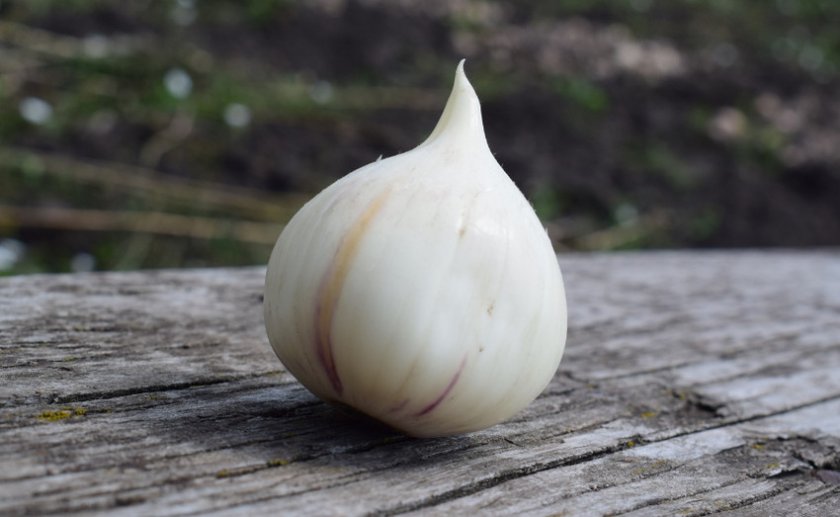
How to grow at home
The quality and quantity of the harvest directly depends on the quality of the planting material, correct planting and compliance with all agrotechnical requirements.
Optimal timing for planting
One of the main qualities of the variety is its resistance to frost. Therefore, plantings are perfectly preserved throughout the winter and start up the first shoots even before the snow cover melts. Regardless of the chosen planting method, each gardener selects the time individually, focusing on climatic features. Usually planting takes place in the fall, closer to the first decade of October. This allows the ground to rest and gain strength from previous plantings.
Growing conditions
The peculiarity of the variety lies in its unpretentiousness to the ambient temperature. The bow forms well even in harsh conditions. Due to the short growing season of the aboveground part of the plant (from 14 days), all the shoots have time to gain strength before the onset of extreme heat.

Cultivation should take place in a low humidity environment. All parts of the plant are able to retain a sufficient amount of moisture, so it is worth watering the beds occasionally, only during particularly hot periods. But with late planting, the onion may not have time to form the aerial part before the onset of hot weather. In this case, it is worth shading young shoots (for example, with an agro net) to provide diffused light.
Onions actively grow and form on loose soils with a normal acidity level. An important condition is the free circulation of oxygen in the root system. Clay soil forms stagnant moisture, which provokes rotting of the bulbs. It is preferable to plant the plant on hills or form tall beds by an artificial method.
Selection and preparation of planting material
Since the period of growing onions from seeds takes a long period of time, it is worth making sure of the quality of the planting material. The purchased seeds are reviewed, the wrinkled and damaged seeds are removed, and then soaked in a 1% solution of potassium permanganate. The grains that float to the surface are removed, and the remaining ones are disinfected for 30 minutes.
Immediately before planting, the planting material is subjected to scarification, namely, damage to the upper layer. This is done in order to induce early hatching and sprouting. The seeds are treated with sandpaper, coarse sand, or an incision is made with a sharp instrument. Whole onions are split into several parts, which is also considered to be damage to the integrity of the shell.
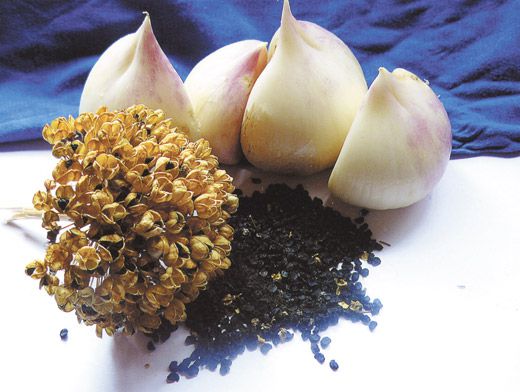
Growing methods
With the seed growing method, the bulbs undergo a three-year ripening cycle. In the first year, seeds are sown to a depth of 2 cm, the bed is sprinkled with peat and left to winter. In the spring thaw, the first shoots will hatch, which will wither with the onset of summer. Each plant will form a small bulb up to 3 cm in size. These bulbs are dug up in the fall, dried and planted before winter.
From this moment, the second year starts, in which in the spring the plant will release the first full leaves and an arrow.With the resulting crop, the same manipulations are carried out as with the first year. The bulbs planted in the third year are able to bring a full, healthy harvest. This method is not very popular with gardeners because it takes too long.
The vegetative method is the most common and involves planting ripe bulbs and their parts. The prepared material is laid to a depth of 10 cm, after which the bed is covered for the winter. In early spring, you can expect friendly shoots, and after the leaves dry out, collect a bountiful harvest. Regardless of the method chosen, landing is carried out according to the 30x20 scheme.
To preserve the maximum of nutrients in the bulbs will help breaking off the arrows before flowering.
Basic rules of care
The culture is undemanding to abundant watering, on the contrary, stagnant moisture can cause the death of the plant. Early vegetation allows you to use the moisture retained in the soil after the snow melts. Subsequently, it is worth controlling the moisture content of the soil and, if necessary, watering.
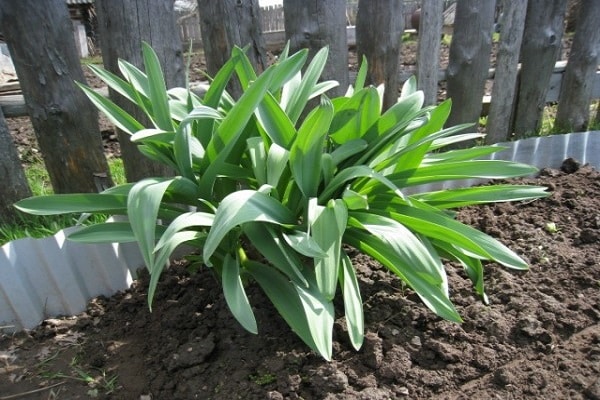
Plant care includes mandatory loosening of the soil after rains, snow melting and watering. This will ensure continuous oxygen circulation and prevent the development of pathogenic microflora. It is important to free the soil from weeds in a timely manner, which take up nutrients and weaken the crop.
The first feeding using ash urea and nitrogen fertilizers is carried out when the leaves appear. Potash dressings are carried out no more than twice a month, which improve shooting.
Diseases and pests
Harmful insects do not like any kind of onion, so there is no need to worry about this. Other common problems include rot and growth failure. The root cause of these pathologies is improper care and waterlogging. The location of the beds on a hill will help to prevent negative consequences so that the water leaves in a timely manner.
Harvesting and storage
Harvesting is started after the foliage has dried. The bulbs are dug up, cleaned from the ground and dried. They are then sorted according to size and stored in a dry, cool room. Large specimens are used for food, while small and medium ones are left for long-term storage.
The use of Anzur onions in cooking
Without heat treatment, Suvorov onions are rarely used for food. Raw onions are poisonous, so there will be more harm than good from eating them. After reviewing the available recipes, the housewives first soak the fruits, and then boil them with honey, bake or pickle. The vegetable is often used in salads, soups and main dishes, as well as an addition to sandwiches.
- Pickled onion
- Use when cooking okroshka
- Application in the preparation of salads
The use of the Suvorov onion in medicine
The unsurpassed medicinal properties of onions were duly appreciated back in the Middle Ages. Its benefits are described in the treatises "On maintaining health." With its help, you can overcome colds, diseases of the nasopharynx, scurvy. The rich vitamin composition improves visual performance and increases brain activity.
Decorative use
Many gardeners originally used the culture as a decoration that pleases with early flowering. It can be found near ponds, backyard paths and just in flower beds. Suvorov's onions are often combined with other plants that bloom in summer, which will block the wilting foliage.
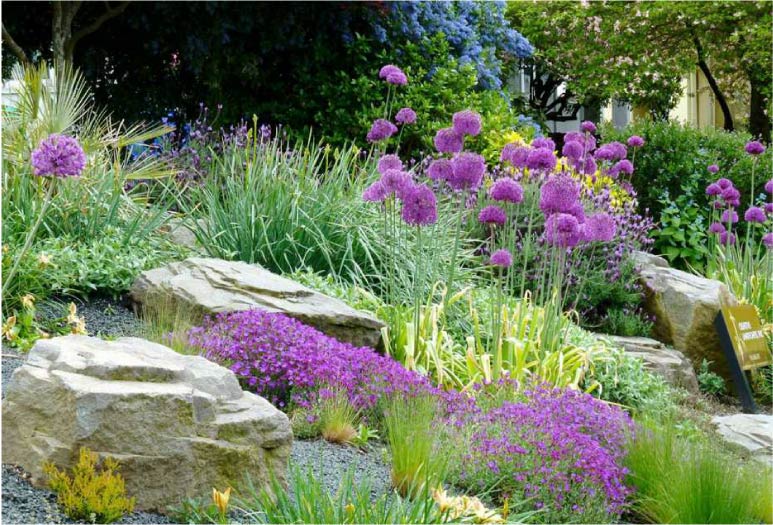
The little-known Suvorov onion has recently been gaining popularity among gardeners. This is actively promoted not only by decorative attractiveness, but also by the storehouse of useful substances contained in the bulb. But if handled carelessly, onions can be harmful to health.

